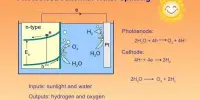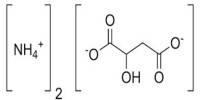Hypochlorous acid (HOCl or HClO) is a weak acid formed when chlorine dissolves in water and partially dissociates, resulting in hypochlorite, ClO. HClO and ClO are oxidizers that act as the primary disinfectants in chlorine solutions. It is a weak acid with oxidizing properties that are produced when chlorine dissolves in cold water and is used in bleaching and water treatment.
Due to rapid equilibration with its precursor, HClO cannot be isolated from these solutions. Bleaches, deodorants, and disinfectants are made from sodium hypochlorite (NaClO) and calcium hypochlorite (Ca(ClO)2.
Hypochlorous acid is nature’s oldest disinfectant, and it is currently present in approximately 7.5 billion people. As in, right now, inside all humans. It is naturally found in the white blood cells of mammals, including humans. It is non-toxic and has been used for many years as a safe wound care solution.
When dissolved in water, hypochlorous acid water has been found to have strong disinfection properties, which, combined with its non-toxicity, make it an ideal cleaning agent and sanitizer. The US Environmental Protection Agency has identified it as a disinfectant effective against COVID-19, which is supported by clinical studies.

How is hypochlorous acid made?
The chemistry of producing hypochlorous acid is quite simple. Begin with the exact proportions of three ingredients: salt, water, and vinegar. You may recall that a salt molecule is composed of the elements sodium and chloride (NaCl), whereas a water molecule is composed of hydrogen and oxygen (H2O). When an electrical current is passed through the solution, the molecules separate and the elements combine to form two new molecules:
- Hypochlorous acid (HOCl)
Nature’s super-strong disinfectant, as well as the ingredient that gives bleach its anti-microbial properties. When the pH of the solution is reduced to the proper level, HOCl is formed, which is the same substance that your immune system uses to fight germs. So, when you take your child to the indoor play area/petrie dish, your white blood cells begin to produce hypochlorous acid.
- Sodium hydroxide (NaOH)
A common detergent is found in a variety of products ranging from toothpaste to skin moisturizers to cleaning products. Because concentration levels differ so greatly between products, so do toxicity levels.
Uses
- In organic synthesis, HClO converts alkenes to chlorohydrins.
- In biology, it is generated in activated neutrophils by myeloperoxidase-mediated peroxidation of chloride ions, and contributes to the destruction of bacteria.
- In medical, hypochlorous acid water has been used as a disinfectant and sanitiser.
- In disinfection, it has been used in the form of liquid spray, wet wipes and aerosolised application.
Information Source:
















